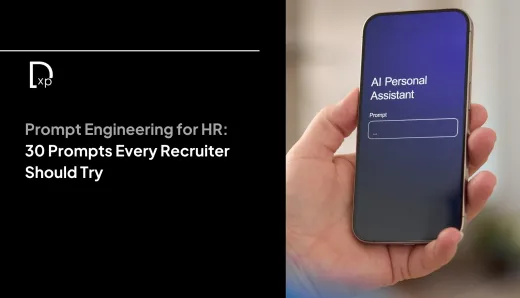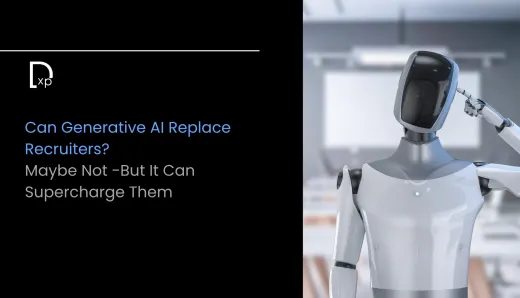Beyond the Turing Test: Rethinking Intelligence in the Age of AI

When Alan Turing posed his famous question in 1950- "Can machines think?"- he was not trying to build a machine that thinks like a human. He was trying to understand what intelligence means. His Turing Test, which judged a machine’s intelligence by how well it could mimic human conversation, became the benchmark for AI for decades. But in 2025, as the future of AI races far beyond anything Turing could have imagined, we are left asking a more fundamental question: is it time to move beyond the Turing Test?
Artificial Intelligence today can pass the Turing Test with ease. Large language models write essays, debate politics, compose poetry, and even crack jokes. But does that mean they are intelligent? Or just convincingly programmed? The difference is not philosophical anymore. It has real-world implications, from how we interact with AI to how we define intelligence itself.
The Imitation Game Has Its Limits
The Turing Test measures imitation. If a machine can convince a human that it is also human, it passes. But in 2025, imitation is no longer enough. The future of AI lies not in how well machines can mimic us, but in how well they can augment us. Intelligence should not be judged by human likeness alone. It should be about usefulness, creativity, adaptability, and understanding.
Consider a chess engine. It doesn’t play like a human, but it plays better. Autonomous vehicles don't drive like humans, and that’s a good thing. We don’t need AI to mirror human behaviour; we need it to improve upon it. The Turing Test, while historically important, has become more of a party trick than a scientific measure. It tells us nothing about the depth or kind of intelligence a machine holds.
Multiple Intelligences, Not Just One
AI has exposed a limitation in how we define intelligence itself. For too long, we have treated it as a single trait, either you have it or you don’t. But the future of AI is revealing that intelligence can be fragmented, specialised, and domain-specific. A machine that can navigate Mars doesn’t need to compose music. One who diagnoses a disease doesn’t need to understand sarcasm.
This is where the theory of multiple intelligences, long championed in education, becomes relevant to AI. Linguistic, spatial, logical, emotional, and ethical intelligences are all distinct. AI systems may excel in one but fail in another. Judging them by a single standard human-style conversation is like judging a fish by its ability to climb a tree.
Rethinking Consciousness vs Intelligence
Another confusion that continues to dominate public discourse is between intelligence and consciousness. Just because an AI seems smart does not mean it is self-aware. It doesn’t have experience. It doesn’t suffer. And it doesn’t have desires. Consciousness is a deep, unresolved mystery of biology. Intelligence, by contrast, is a problem-solving ability, and that is what AI excels at.
By conflating the two, we risk applying the wrong ethics and expectations to AI systems. The future of AI is not about creating conscious beings. It's about building systems that can understand, predict, and improve our world without necessarily knowing that they are doing so.
Can AI Be Creative Without Being Human?
One of the most fascinating developments in the future of AI is its foray into creativity. AI composes symphonies, paints abstract art, and writes novels. Critics argue this is mere replication. But creativity itself is often built on influence. Even human artists borrow, remix, and reframe. If a machine creates something new that moves us, does it matter that it lacks emotion?
This is where traditional definitions fall short. The Turing Test would not credit a machine for creating something original unless it can also convince us that it has human-like feelings. But maybe the better test is impact, not intent. If AI can generate ideas we never thought of, if it can collaborate with us meaningfully, then maybe it doesn’t need to feel to be creative.
Time for New Benchmarks
AI researchers are already proposing alternatives to the Turing Test. The Winograd Schema Challenge, for example, focuses on common-sense reasoning. Other models look at ethical decision-making or the ability to explain actions. These are more nuanced indicators of intelligence, not based on mimicry but on depth.
As the future of AI unfolds, we need tests that measure what machines are actually good at, not how well they pretend to be human. We need to redefine intelligence in ways that embrace diversity- of function, form, and purpose.
The Human Mirror Effect
Ironically, the rise of AI has taught us more about ourselves than about machines. In trying to program intelligence, we have had to confront our assumptions, biases, and blind spots. The Turing Test assumes humans are the gold standard. But what if human intelligence is just one version of many? What if AI opens the door to non-human forms of intelligence that are equally valid?
The future of AI may be more alien than we expect, not robotic versions of us, but something fundamentally different. To understand and embrace that, we must expand our thinking.
Conclusion: Intelligence Reimagined
The Turing Test was a product of its time. It helped launch an era of exploration, curiosity, and debate. But it is no longer enough. The future of AI demands broader definitions, richer metrics, and deeper understanding. Intelligence in the age of AI is no longer about mimicry. It’s about capability, collaboration, and contribution.
As machines grow more sophisticated, we must stop asking whether they are like us and start asking what they can teach us. That is the new benchmark. That is the real test.




